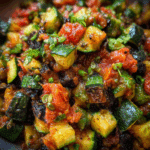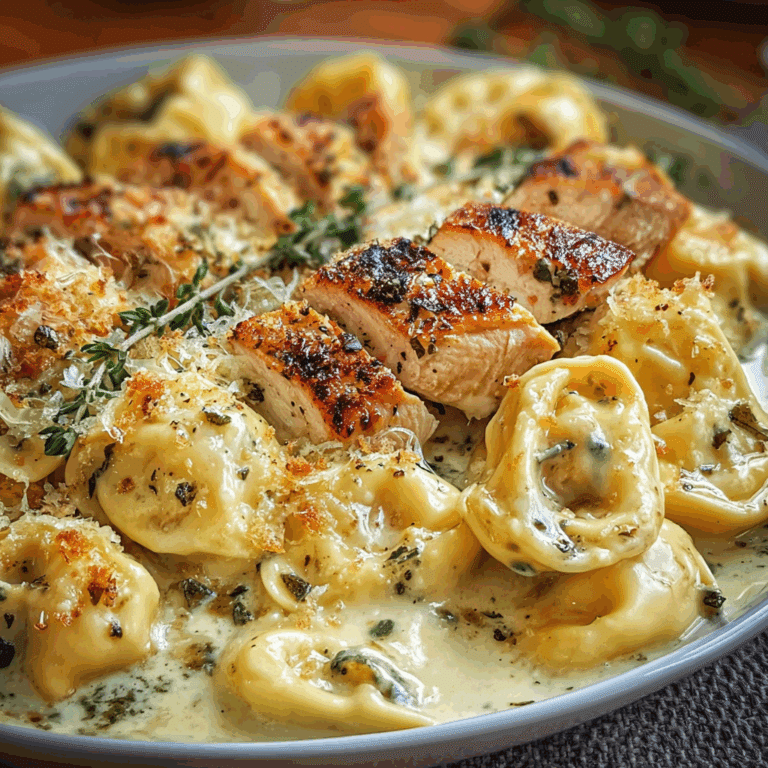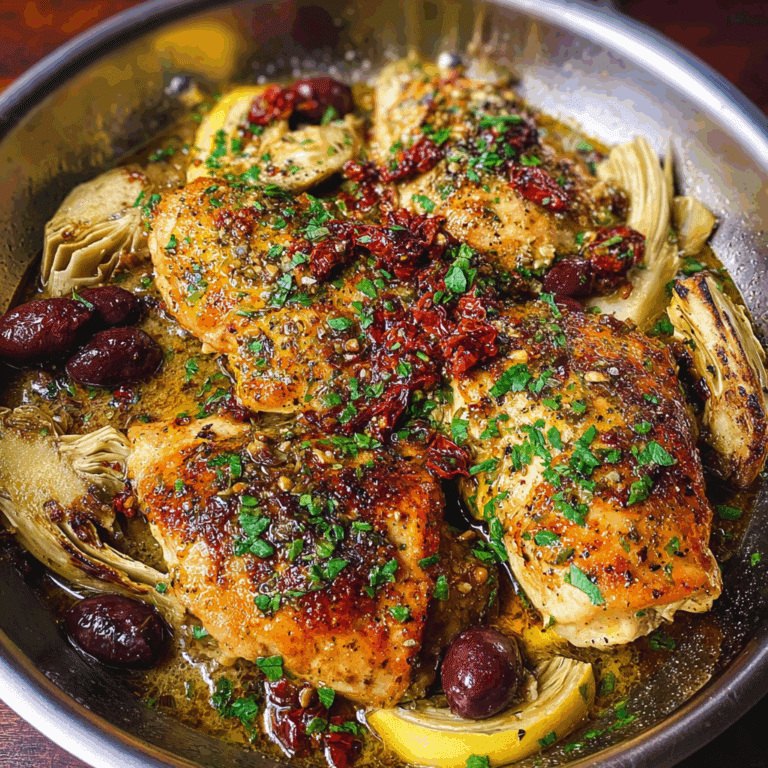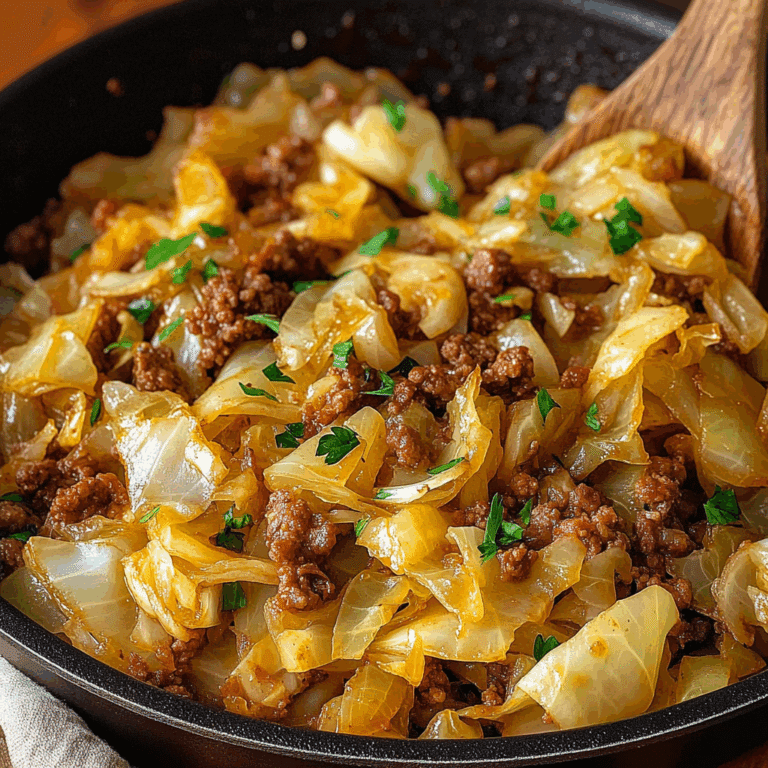Easy Calabacitas Recipe for Summer Meals
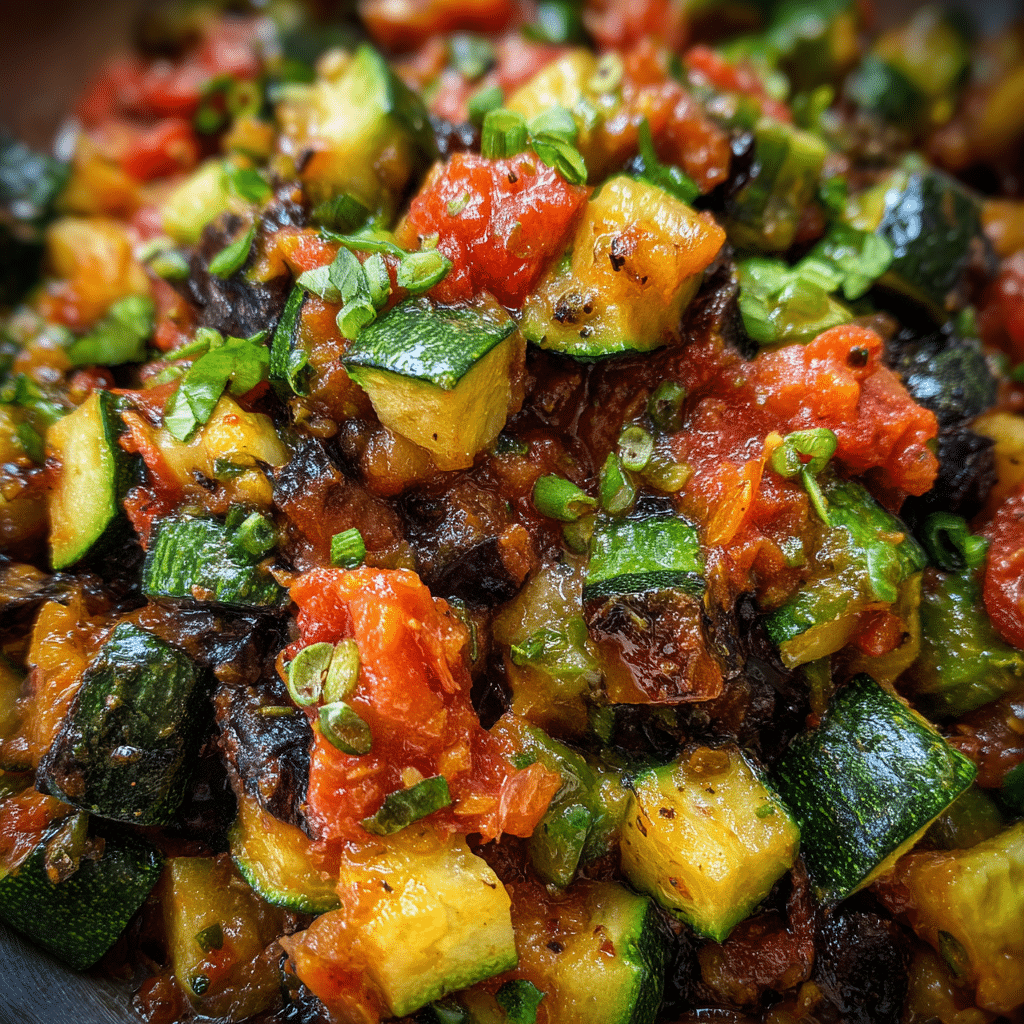
If you’re looking for a bright, fresh, and incredibly simple dish to brighten up your summer meals, Calabacitas is the perfect answer! This traditional Southwestern vegetable medley combines tender squash, sweet corn, and melty cheese for a flavorful, colorful side or light main dish that’s always ready in minutes. Whether you’re new to calabacitas or a longtime fan, this recipe highlights how effortless it is to bring fresh garden flavors straight to your table, making every bite a celebration of those sunny summer days.
Why You’ll Love This Recipe
- Fresh and Vibrant: Calabacitas bursts with colors and fresh flavors from zucchini, corn, and peppers that are a delight to the senses.
- Super Quick to Make: With minimal prep and fast cooking, this recipe fits perfectly into any busy summer day.
- Versatile and Adaptable: It pairs beautifully as a side or can be enjoyed as a light main with just a few tweaks.
- Healthy and Wholesome: Loaded with seasonal veggies, it’s a nutrient-packed dish that feels good to eat.
- Comfort in Every Bite: The melted cheese and gentle spices make it cozy yet refreshing at the same time.
Ingredients You’ll Need
The magic of calabacitas lies in its simple ingredient list that brings together amazing textures and vibrant tastes. Each element plays a role—from the tender zucchini’s mild sweetness to the juicy kernels of corn adding a naturally crisp pop, along with the creamy cheese for melt-in-your-mouth perfection.
- Zucchini: Use fresh, medium-sized zucchini for that perfect tender bite and subtle flavor.
- Corn: Fresh or frozen kernels add sweetness and texture to the dish.
- Onion: Chopped white or yellow onion offers a slight sharpness that balances the veggies.
- Fresh Tomatoes: Adds juiciness and a touch of acidity for depth of flavor.
- Green Chiles or Poblano: For a mild kick, roasted or fresh—choose according to your spice preference.
- Garlic: Minced for aromatic richness.
- Cheese: Traditionally queso fresco or Monterey Jack for melty creaminess.
- Olive Oil or Butter: For sautéing to develop gentle caramelization and flavor.
- Salt & Pepper: To enhance and balance all the natural flavors.
- Cilantro (optional): Fresh herbs brighten the dish and add a fragrant note.
Variations for Calabacitas
Calabacitas is wonderfully flexible, allowing you to tailor it to your taste buds, dietary needs, or what you have in your kitchen. Feel free to explore these simple twists to keep the classic spirit while making the dish uniquely yours.
- Vegan Version: Skip the cheese and add extra avocado or a sprinkle of nutritional yeast for a cheesy vibe.
- Spice It Up: Add diced jalapeños or a pinch of cayenne for a bolder heat dimension.
- Protein Boost: Toss in cooked black beans or shredded chicken to make it a heartier entrée.
- Different Cheeses: Substitute queso fresco with feta or pepper jack for a new flavor profile.
- Roasted Vegetables: Instead of sautéing, roast the squash, peppers, and corn for a deeper, caramelized taste.

How to Make Calabacitas
Step 1: Prepare Your Vegetables
Start by washing and chopping the zucchini into bite-sized cubes. Dice the onion and tomatoes, mince the garlic, and slice the green chiles or poblanos if using. Fresh corn can be cut from the cob, or you can measure out frozen kernels.
Step 2: Sauté Aromatics
Heat olive oil or butter in a large skillet over medium heat. Add chopped onions and garlic, cooking until translucent and fragrant—usually about 3 to 5 minutes.
Step 3: Add Veggies and Cook Through
Stir in zucchini, corn, tomatoes, and green chiles. Season with salt and pepper, then sauté everything together until the squash is tender but not mushy, about 7 to 10 minutes.
Step 4: Finish With Cheese and Herbs
Once the vegetables are cooked to your liking, sprinkle the cheese over the top. Cover the pan for a couple of minutes to allow the cheese to melt beautifully. Add freshly chopped cilantro if you like, then gently mix before serving.
Pro Tips for Making Calabacitas
- Use Fresh Ingredients: Crisp, fresh vegetables make all the difference in flavor and texture.
- Don’t Overcook the Zucchini: Keep it tender but slightly firm to prevent sogginess.
- Layer Flavors: Start with sautéed onions and garlic for a flavorful base.
- Cheese Choice Matters: Use a mild melting cheese to keep it creamy without overpowering the vegetables.
- Adjust Seasonings Last: Taste towards the end and fine-tune salt, pepper, or heat levels.
How to Serve Calabacitas
Garnishes
A sprinkle of fresh cilantro or a squeeze of lime juice brightens the dish and adds a fresh finish. For extra zest, add finely chopped green onions or a dash of smoked paprika.
Side Dishes
Calabacitas shines as a side to grilled meats, roasted chicken, or black beans and rice, creating a balanced summer plate full of vibrant flavors and textures.
Creative Ways to Present
Serve calabacitas warm in small bowls for a side dish, or pile it into warm corn tortillas with avocado and salsa for a delicious vegetarian taco option. Layer it over quinoa or serve alongside a fresh salad for a light, nutritious meal.
Make Ahead and Storage
Storing Leftovers
Calabacitas stores well in an airtight container in the refrigerator for up to 3 days, making it a convenient option for quick lunches or dinners.
Freezing
Though best fresh, you can freeze calabacitas by placing it in a freezer-safe container. Keep in mind that zucchini may change texture slightly after thawing.
Reheating
Reheat gently on the stove or in the microwave to keep the vegetables tender and maintain the melty cheese consistency. Adding a splash of water or olive oil can help refresh the dish.
FAQs
What exactly is Calabacitas?
Calabacitas is a traditional Southwestern dish featuring sautéed zucchini squash mixed with corn, peppers, tomatoes, and cheese, offering a fresh and flavorful vegetable medley perfect for warm-weather meals.
Can I make Calabacitas vegan?
Absolutely! Simply skip the cheese or replace it with vegan cheese or nutritional yeast to keep the dish creamy and flavorful without any dairy.
Is Calabacitas served hot or cold?
Calabacitas is typically served warm, right off the stove, allowing the cheese to be melty and the flavors vibrant, but it can also be enjoyed at room temperature.
What can I serve with Calabacitas?
This dish pairs wonderfully with grilled meats, beans and rice, or as a topping for tortillas and tacos for a satisfying summer meal.
How can I add protein to Calabacitas?
To add protein, consider mixing in cooked chicken, black beans, or even sautéed tofu for a vegetarian option that makes the dish more filling.
Final Thoughts
There’s something so uplifting about a bowl of calabacitas—its bright colors, fresh flavors, and simple yet satisfying combination make it a top contender for any summer meal. I encourage you to give this easy calabacitas recipe a try, enjoy the process, and share it with friends and family. Once you experience how fresh and flexible this dish is, it might just become your seasonal favorite!
Related Posts
- Easy Cheesy Layered Ground Beef and Pasta Casserole
- Why Salisbury Steak with Garlic Mashed Potatoes and Mushroom & Onion Gravy Is Comfort Food
- Easy Beans Cooked with Ham Hock Recipe
Calabacitas
Calabacitas is a bright, fresh, and simple Southwestern vegetable medley featuring tender zucchini, sweet corn, tomatoes, mild green chiles, and melty cheese. This flavorful dish, perfect as a side or light main, combines fresh garden flavors with comforting melted cheese, making it a vibrant and healthy option for summer meals.
- Prep Time: 10 minutes
- Cook Time: 15 minutes
- Total Time: 25 minutes
- Yield: 4 servings 1x
- Category: Side Dish
- Method: Sautéing
- Cuisine: Southwestern
- Diet: Gluten Free
Ingredients
Vegetables
- 2 medium zucchini, washed and chopped into bite-sized cubes
- 1 cup fresh or frozen corn kernels
- 1 small white or yellow onion, diced
- 2 medium fresh tomatoes, diced
- 1–2 green chiles or poblanos, sliced (roasted or fresh based on preference)
- 2 cloves garlic, minced
Dairy & Fats
- 1 cup queso fresco or Monterey Jack cheese, crumbled or shredded
- 2 tablespoons olive oil or butter (for sautéing)
Seasonings & Garnishes
- Salt, to taste
- Black pepper, to taste
- Fresh cilantro, chopped (optional, for garnish)
Instructions
- Prepare Your Vegetables: Wash and chop the zucchini into bite-sized cubes. Dice the onion and tomatoes, mince the garlic, and slice the green chiles or poblanos if using. If using fresh corn, cut kernels from the cob or measure out frozen kernels.
- Sauté Aromatics: Heat olive oil or butter in a large skillet over medium heat. Add the chopped onions and garlic, cooking until translucent and fragrant, about 3 to 5 minutes.
- Add Veggies and Cook Through: Stir in zucchini, corn, tomatoes, and green chiles. Season with salt and pepper. Sauté together until the squash is tender but not mushy, approximately 7 to 10 minutes.
- Finish With Cheese and Herbs: Sprinkle the cheese over the cooked vegetables. Cover the pan and let the cheese melt for a couple of minutes. Add freshly chopped cilantro if desired, then gently mix before serving.
Notes
- Use crisp, fresh vegetables for the best flavor and texture.
- Do not overcook zucchini; it should remain tender yet slightly firm to avoid sogginess.
- Start with sautéed onions and garlic to build a flavorful base.
- Choose a mild melting cheese such as queso fresco or Monterey Jack to keep creaminess without overpowering the dish.
- Taste and adjust seasonings at the end to balance salt, pepper, and heat level.
Nutrition
- Serving Size: 1 cup
- Calories: 150
- Sugar: 5g
- Sodium: 200mg
- Fat: 8g
- Saturated Fat: 3g
- Unsaturated Fat: 5g
- Trans Fat: 0g
- Carbohydrates: 15g
- Fiber: 3g
- Protein: 5g
- Cholesterol: 15mg
Keywords: Calabacitas, southwestern vegetable medley, zucchini, corn, queso fresco, summer side dish, sautéed vegetables, healthy vegetarian dish

